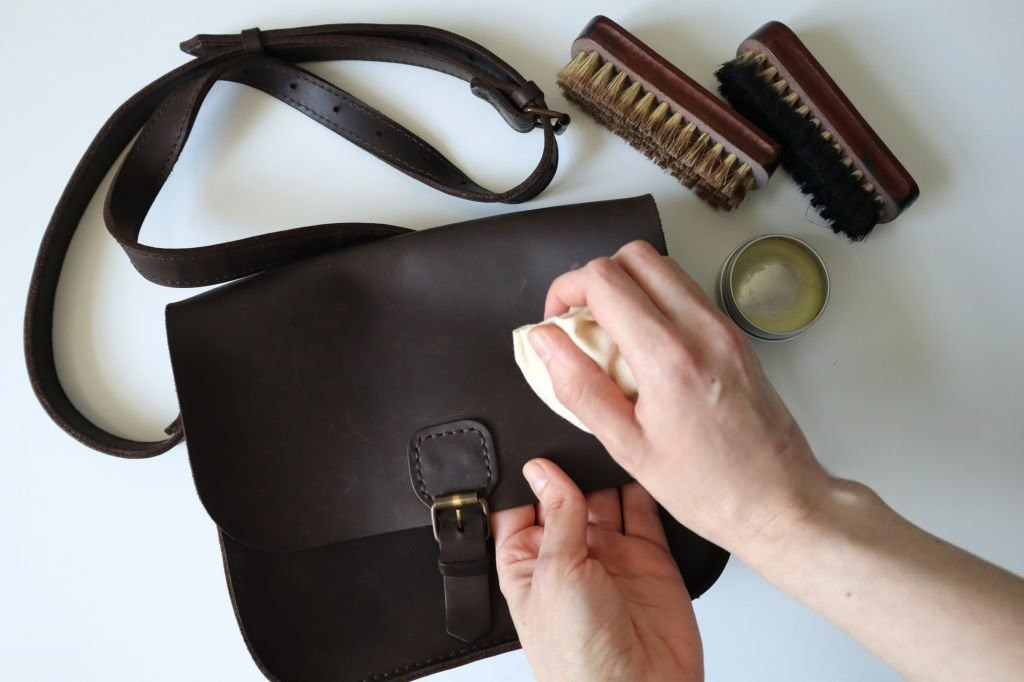No products in the cart.
How to Restore Color to Faded Leather Bags at Home
Your once beautiful leather bag now looks dull, lifeless, and years older than it is. The rich colour that once turned heads has faded into a washed-out reminder of better days. On top of that, an ink stain on leather can make things worse, adding to the frustration of watching a favourite accessory lose its charm despite your best efforts to care for it. You might feel stuck, torn between tossing it out and spending money on a costly repair. But what if the solution to restoring its original glow is simpler, closer, and more affordable than you think?
Understanding Why Leather Fades
Before diving into the restoration process, it is important to understand why leather fades. Leather is a natural material that responds to environmental elements. When exposed to ultraviolet rays from the sun, the leather’s pigments can break down. Additionally, frequent use, exposure to oils from your skin, and contact with water can cause the leather to dry out and discolour.
Common Causes of Leather Fading
- Sunlight Exposure: Direct sunlight breaks down the leather’s pigments.
- Dryness: Lack of moisture can make leather brittle and dull.
- Chemical Cleaners: Harsh chemicals strip the leather of its colour and finish.
- Abrasion: Constant rubbing and friction lead to surface wear and fading.
Assessing the Condition of Your Leather Bag
The first step in restoring colour is to evaluate the overall condition of the bag. Determine whether the leather is simply faded or if it is also cracked, scratched, or heavily soiled. This will help you decide the appropriate level of care and restoration needed.
Checklist for Condition Assessment:
- Is the leather surface smooth or cracked?
- Are there visible stains or grime?
- Is the original colour completely faded or only slightly dulled?
- Is the bag made from finished or unfinished leather?
- Knowing the type of leather and the extent of fading will guide you in choosing the right products and methods.
Supplies You Will Need
Restoring leather at home requires a few essential items. Most of these can be found at local stores or online. Make sure to gather the following before you begin:
| Supplies Needed | Purpose |
| Soft microfiber cloths | Cleaning and applying products |
| Mild leather cleaner | Removes dirt and old residue |
| Leather conditioner | Rehydrates and softens leather |
| For even the application of dye or balm | Restores faded color |
| Small sponge or applicator | For even application of dye or balm |
| Gloves | Protect hands from dye |
| Leather sealant (optional) | Protects and finishes the restored leather |
Step-by-Step Guide to Restore Color
1. Clean the Leather Bag Thoroughly
Before applying any colouring products, start with a deep clean to remove dirt, oils, and debris. Use a mild leather cleaner or a mix of warm water with a few drops of baby shampoo. Gently rub the surface with a damp cloth and let it dry completely.

2. Apply Leather Conditioner
Once the bag is clean and dry, apply a leather conditioner. This step is crucial as it rehydrates the leather and prepares it to absorb the colour evenly. Use a soft cloth to rub the conditioner in circular motions. Allow it to absorb for at least 30 minutes.
3. Test the Color Product
Always test your chosen leather dye or recolouring balm on a small, hidden area of the bag. This helps ensure colour match and prevents unwanted results. Wait for the test area to dry fully before proceeding.
4. Apply the Leather Dye or Balm
Using a sponge or applicator pad, apply the leather dye in thin, even layers. Work in small sections to maintain control and consistency. Let each layer dry before applying the next. Depending on the level of fading, you may need two to three coats.
5. Buff and Let It Dry
After the final coat has dried, use a clean cloth to gently buff the surface. This helps blend the colour and restore shine. Leave the bag to dry in a well-ventilated area, away from direct sunlight or heat sources.
6. Seal the Color (Optional but Recommended)
To prolong the life of the restoration, consider applying a leather sealant. This protective finish locks in the colour and guards against moisture and future fading. Follow the product instructions carefully for the best results.
Tips for Best Results
- Work in a well-lit, clean area to avoid staining surfaces.
- Wear gloves to protect your hands from dyes.
- Do not rush the drying process between steps.
- Always use products designed specifically for leather.
- Avoid using shoe polish, which can clog leather pores.
Maintaining Your Restored Leather Bag
Restoring colour is just the first step. To keep your leather bag looking fresh and vibrant, it is essential to follow a consistent maintenance routine. Here are some best practices:
Regular Care Tips:
- Clean Monthly: Use a damp cloth to remove dust and surface grime.
- Condition Quarterly: Apply a leather conditioner every few months.
- Store Properly: Keep your bag in a dust bag away from direct sunlight.
- Avoid Overstuffing: This maintains the shape and reduces strain.
When to Seek Professional Help
While home restoration is effective for minor to moderate fading, there are cases where professional intervention is necessary. If the leather is severely cracked, torn, or stained beyond repair, it is advisable to consult a leather care specialist. They have access to industrial-grade products and techniques that can restore the item without causing further damage.
Final Thoughts
Reviving the colour of a faded leather bag at home is a rewarding process that not only restores its aesthetic appeal but also extends its life. With a bit of time, patience, and the right materials, you can bring your cherished leather accessory back to life. Remember, leather is a living material that needs regular nourishment and care. Whether you are restoring a vintage handbag or maintaining a new one, the key lies in understanding the leather and using gentle, effective methods.
By investing in proper care and following the steps outlined above, you can ensure your leather bag continues to be a stylish and functional companion for years to come. For more insights into leather maintenance and restoration, explore our blog at Leather Mingle.
Frequently Asked Questions (FAQs)
1. Can I use olive oil or vinegar to restore leather?
No, these can damage the leather and cause uneven colour or residue. Use leather-specific products.
2. How often should I recolour my leather bag?
Usually once a year, or as needed. Regular care can delay the need for recolouring.
3. What dye should I use at home?
Use a water-based or alcohol-based leather dye or recolouring balm made for handbags.
4. Will dyeing affect the softness of my bag?
No, if you condition it first and avoid over-applying the dye, the texture stays intact.
5. Is a leather sealant necessary?
It is optional but recommended for protecting the colour and finish.










Add comment